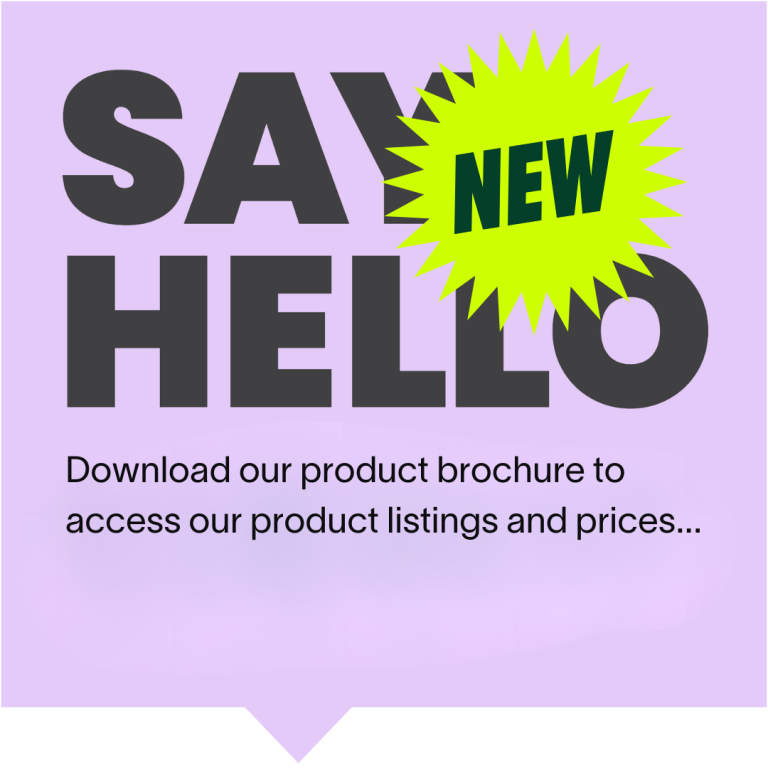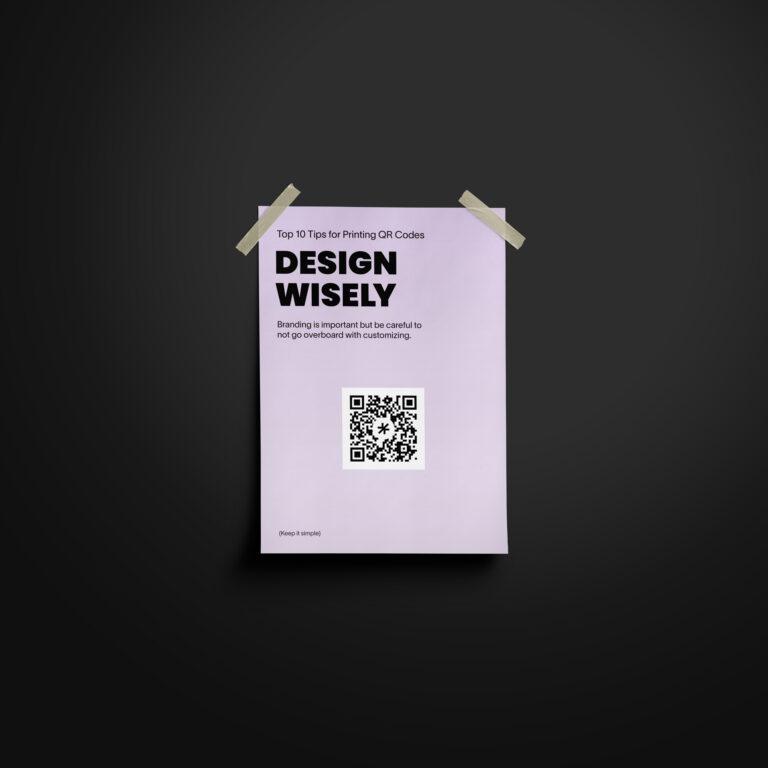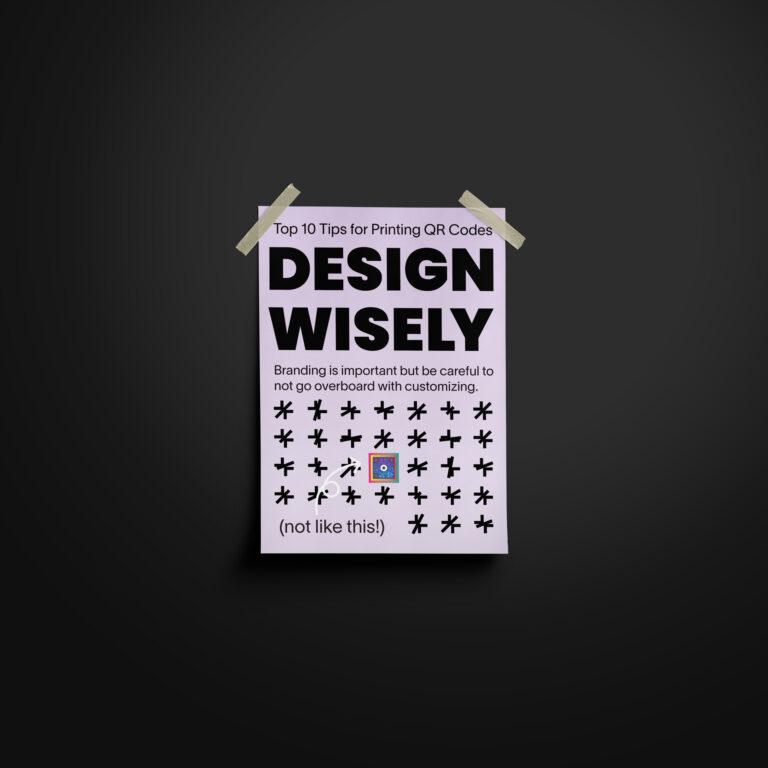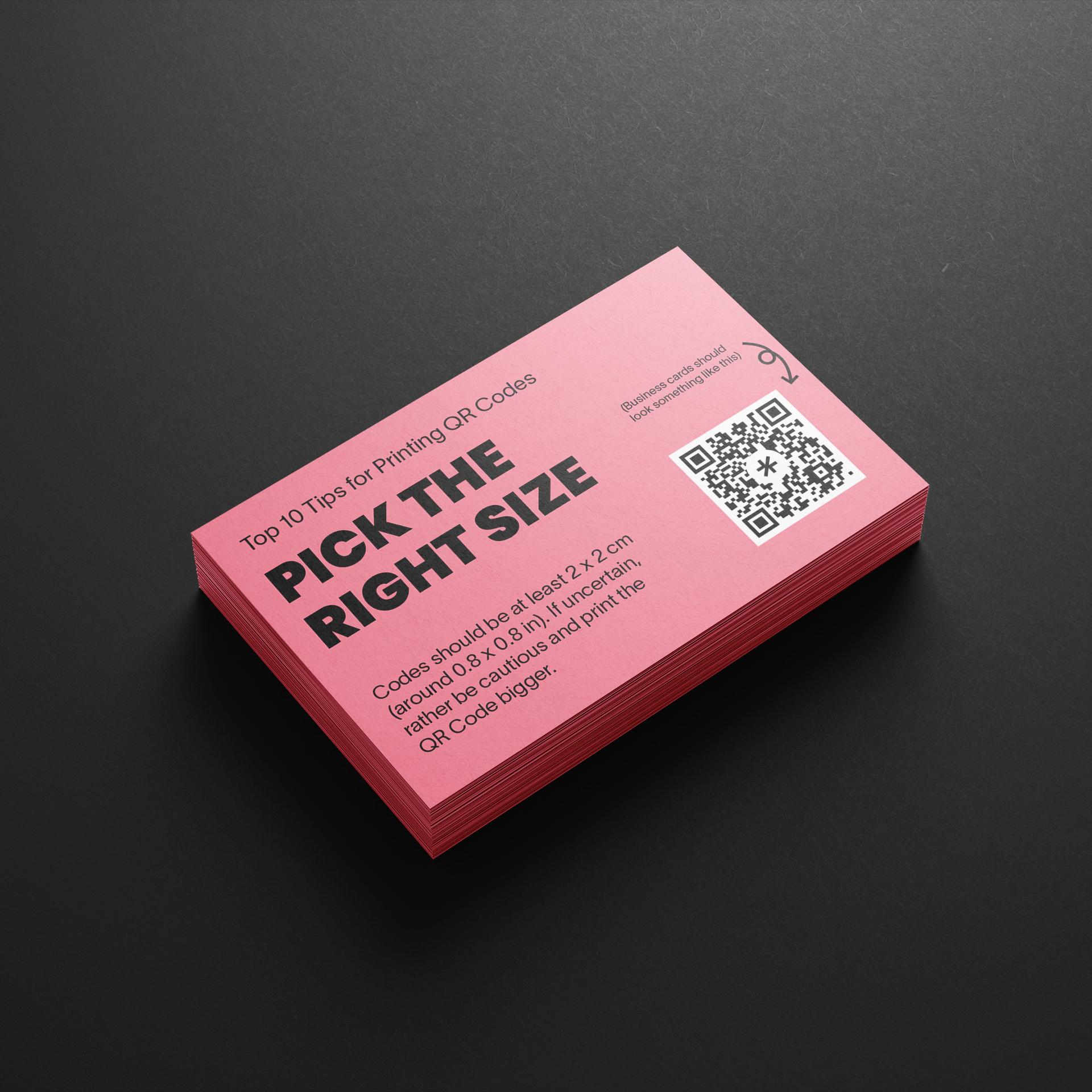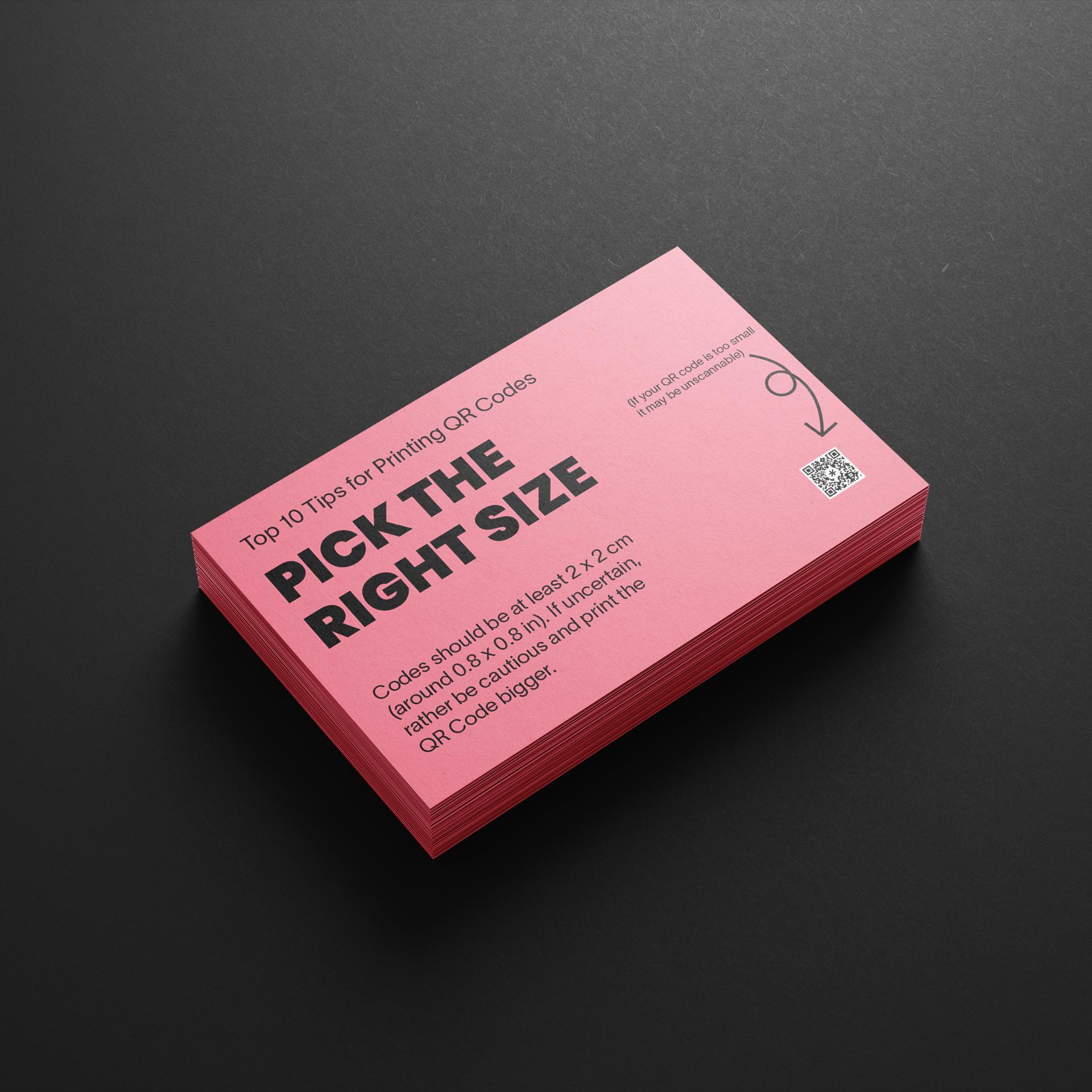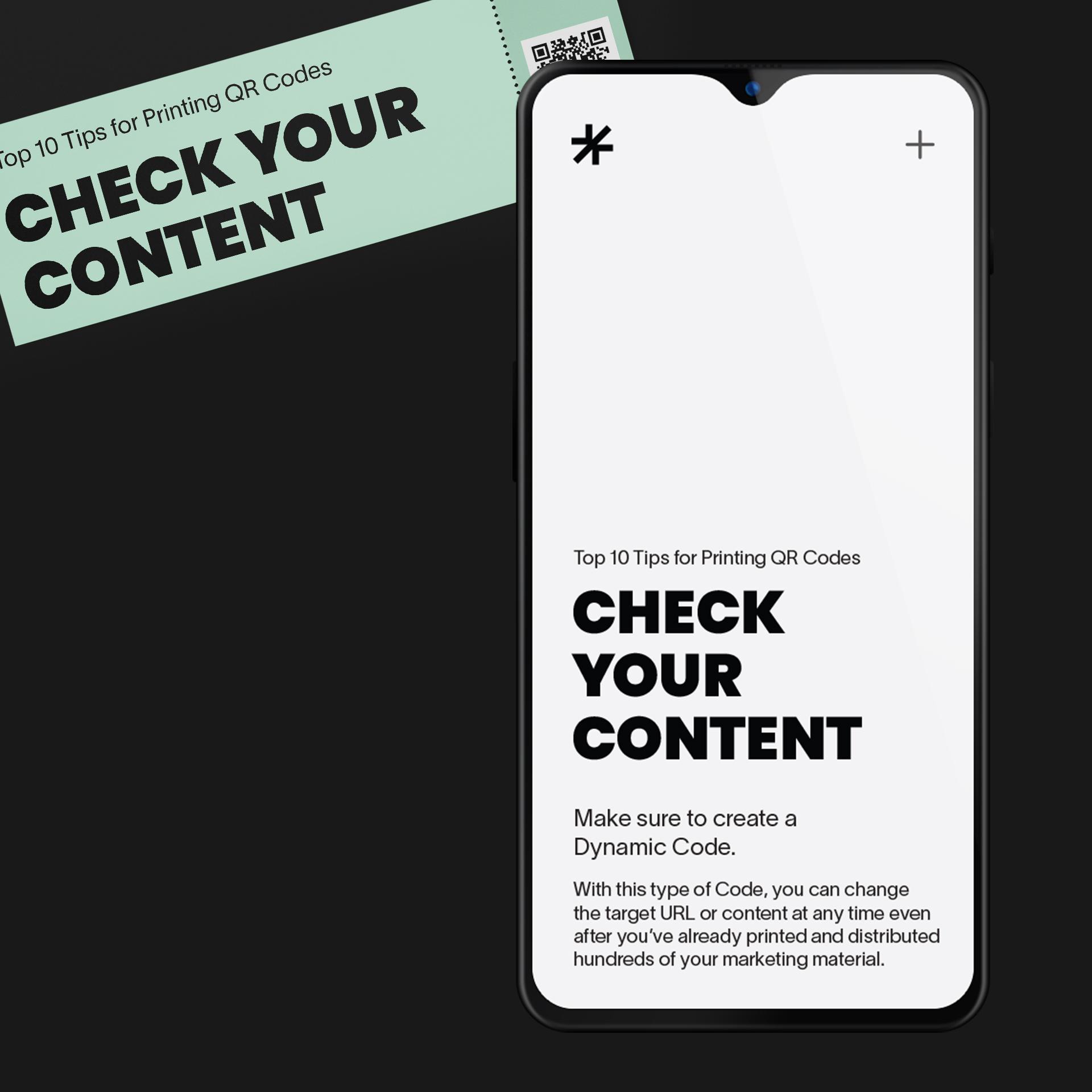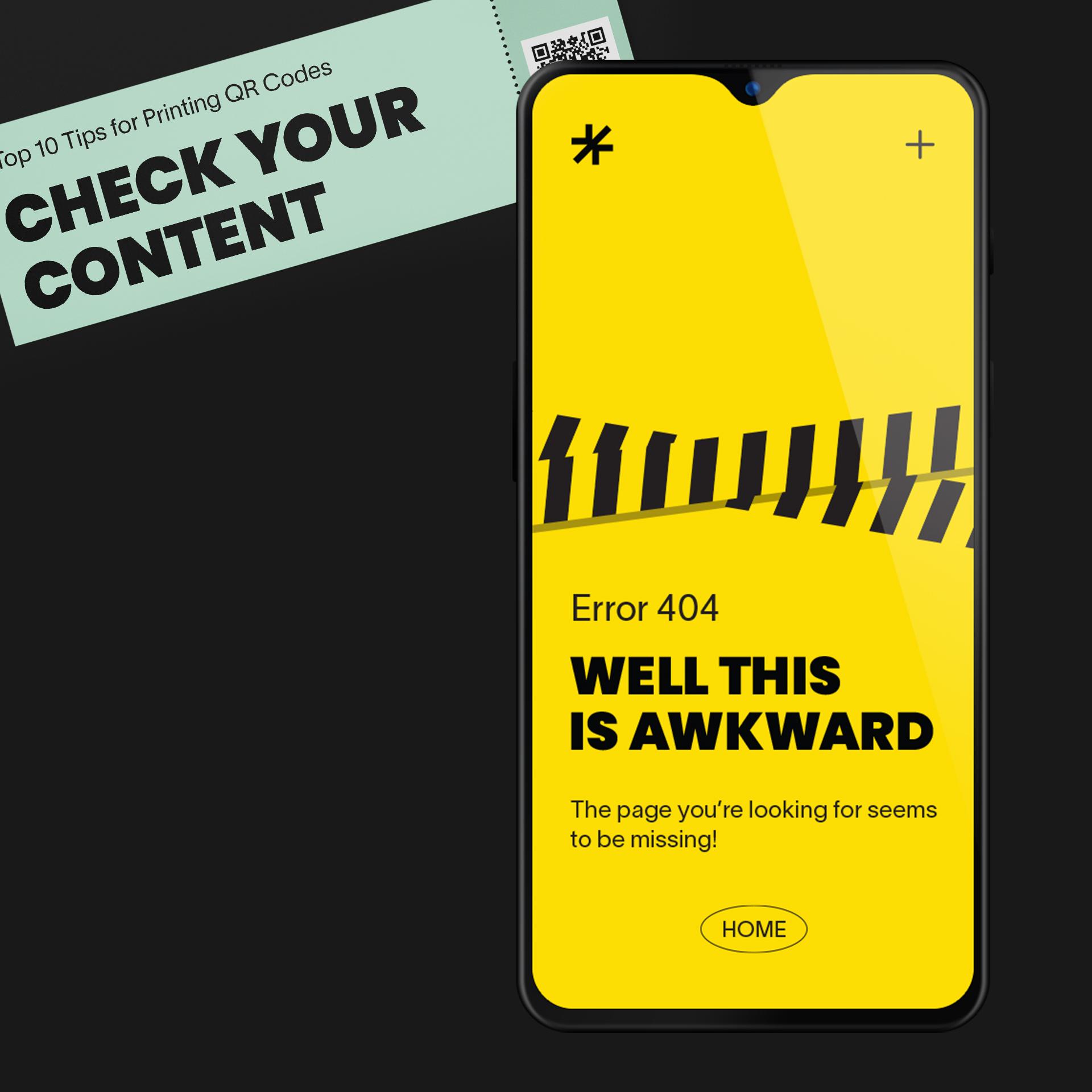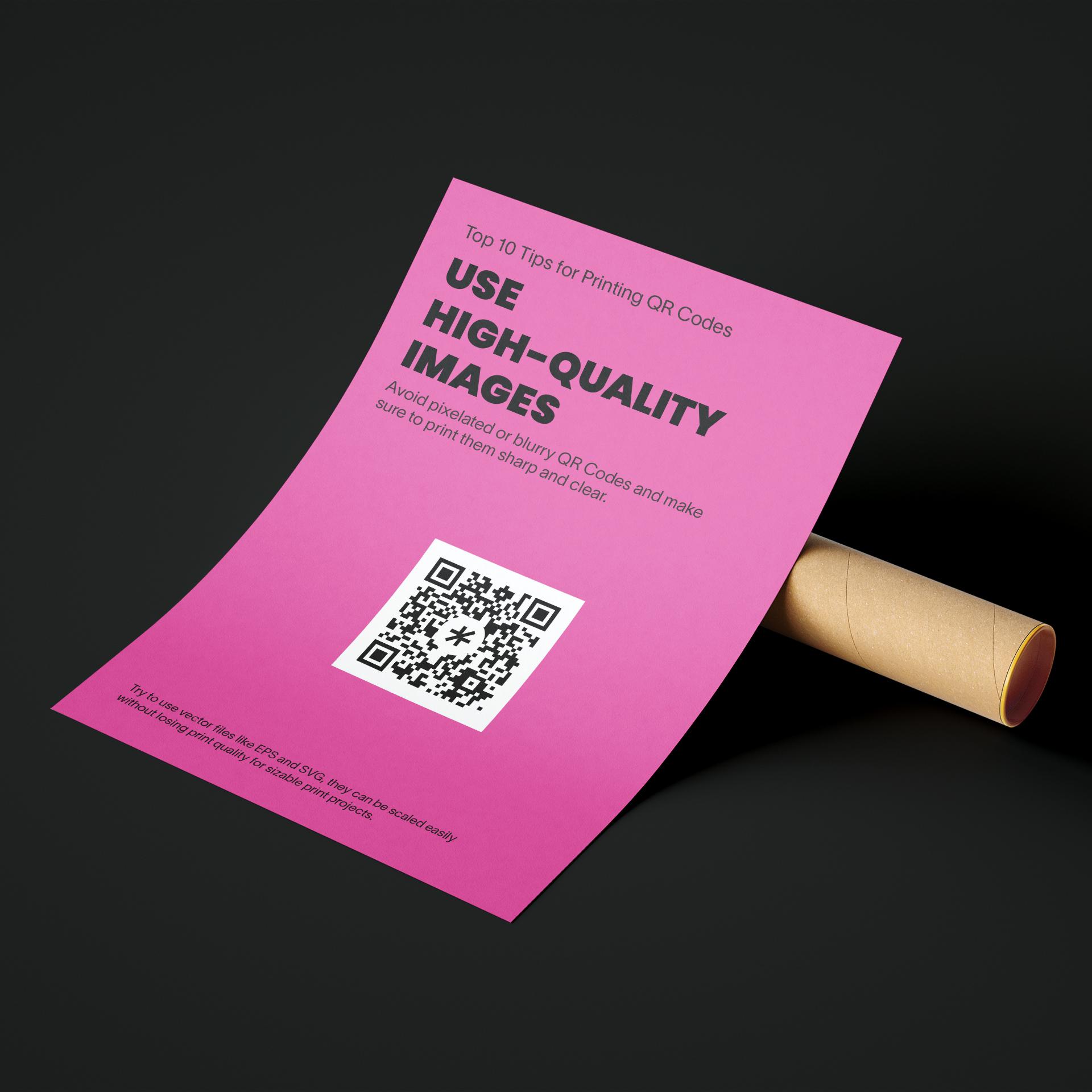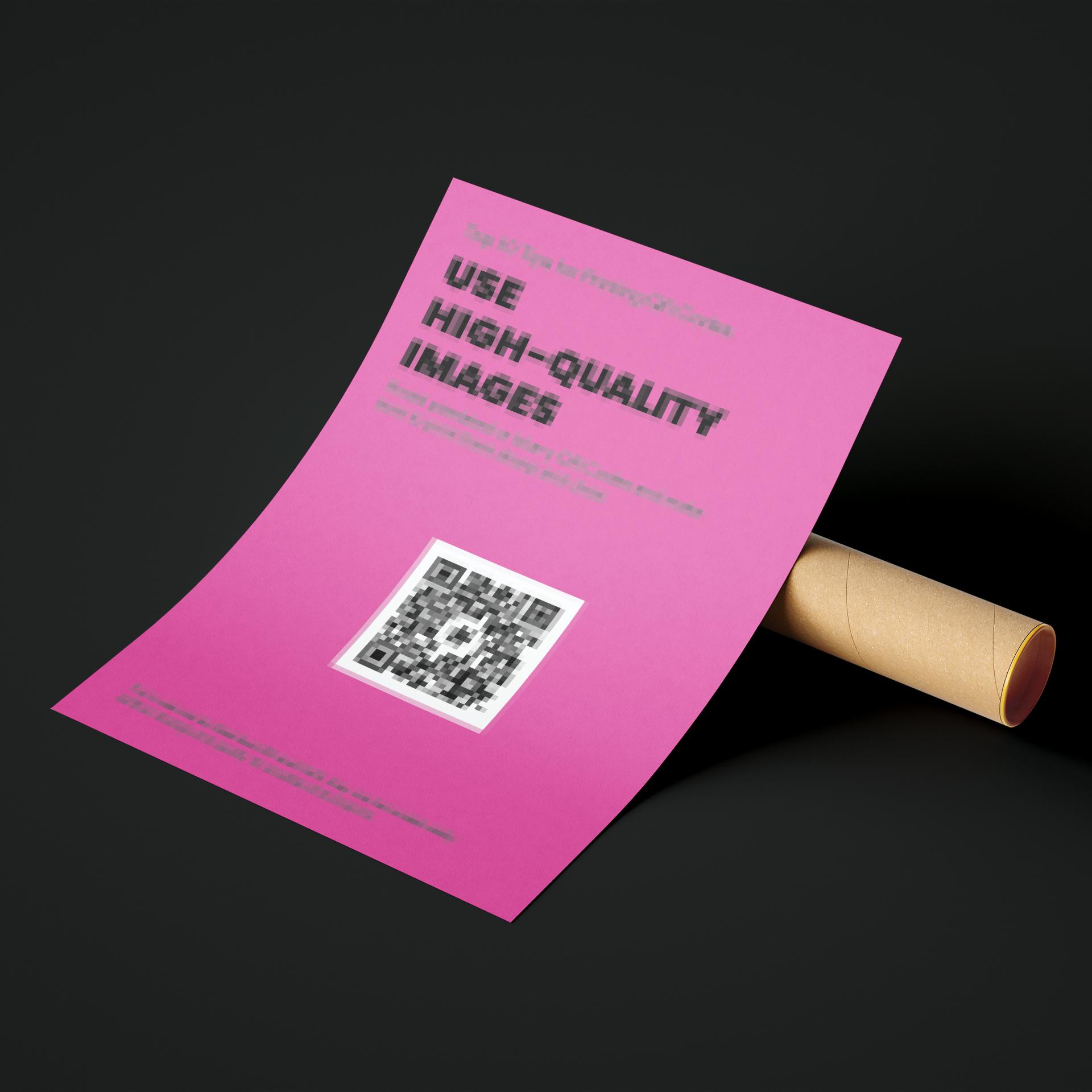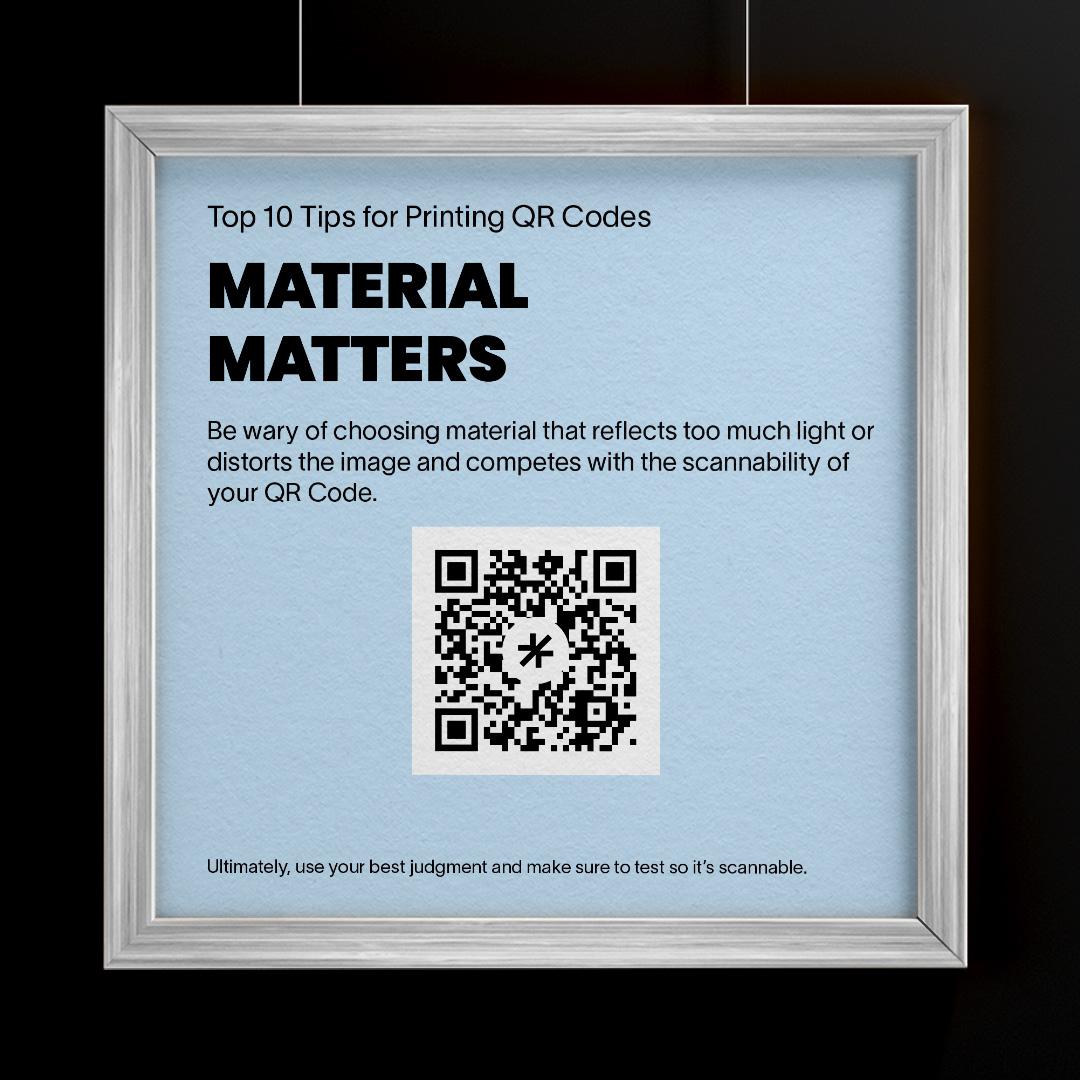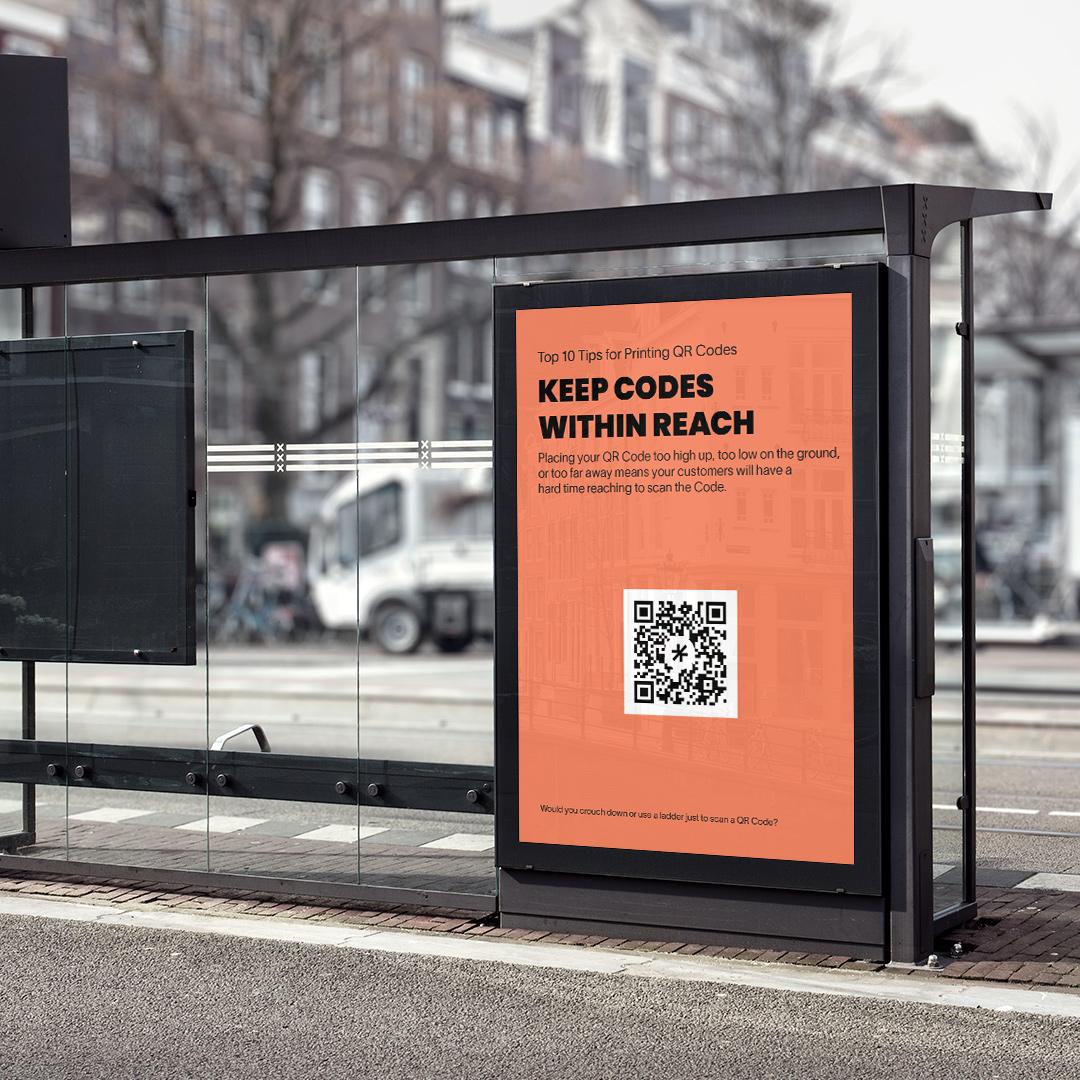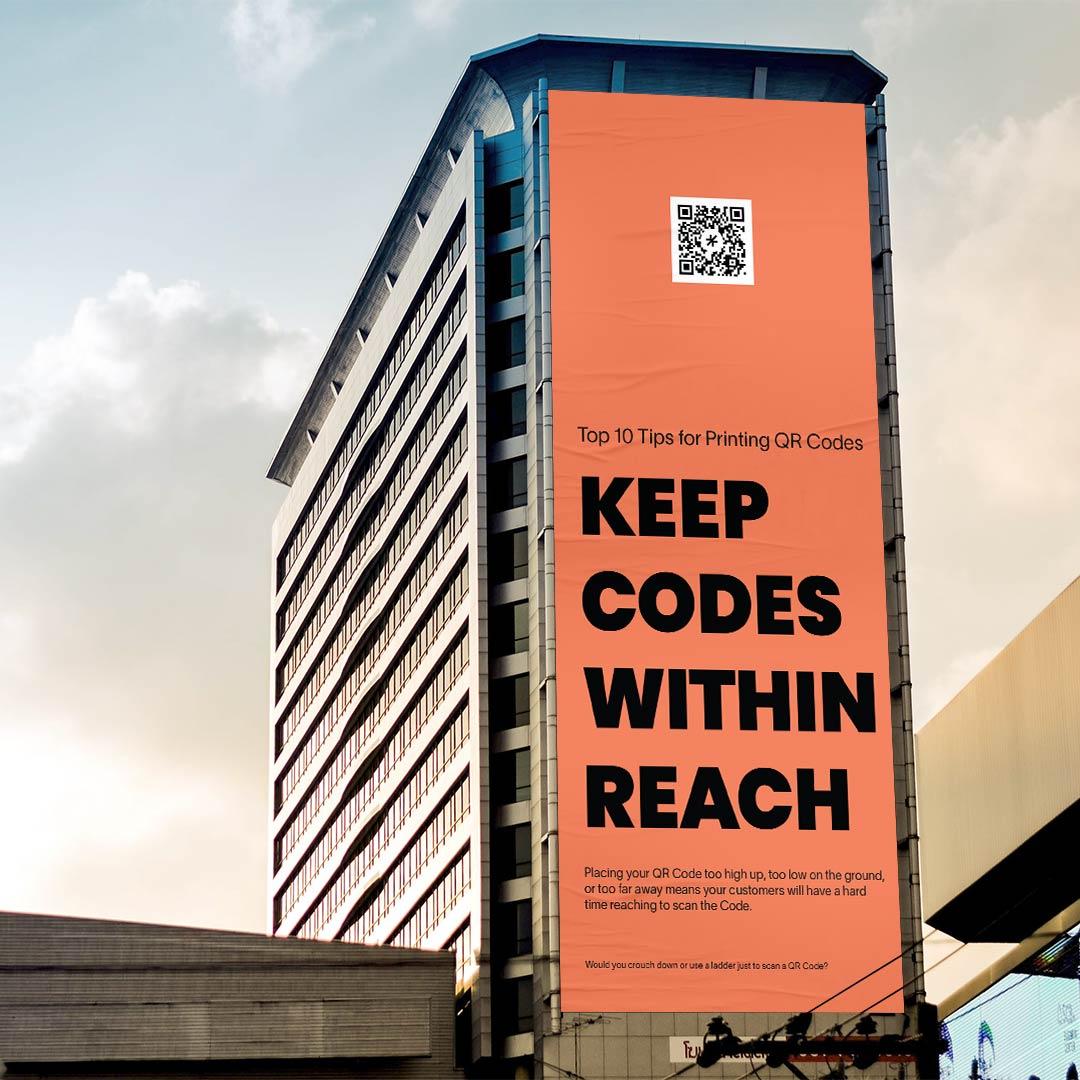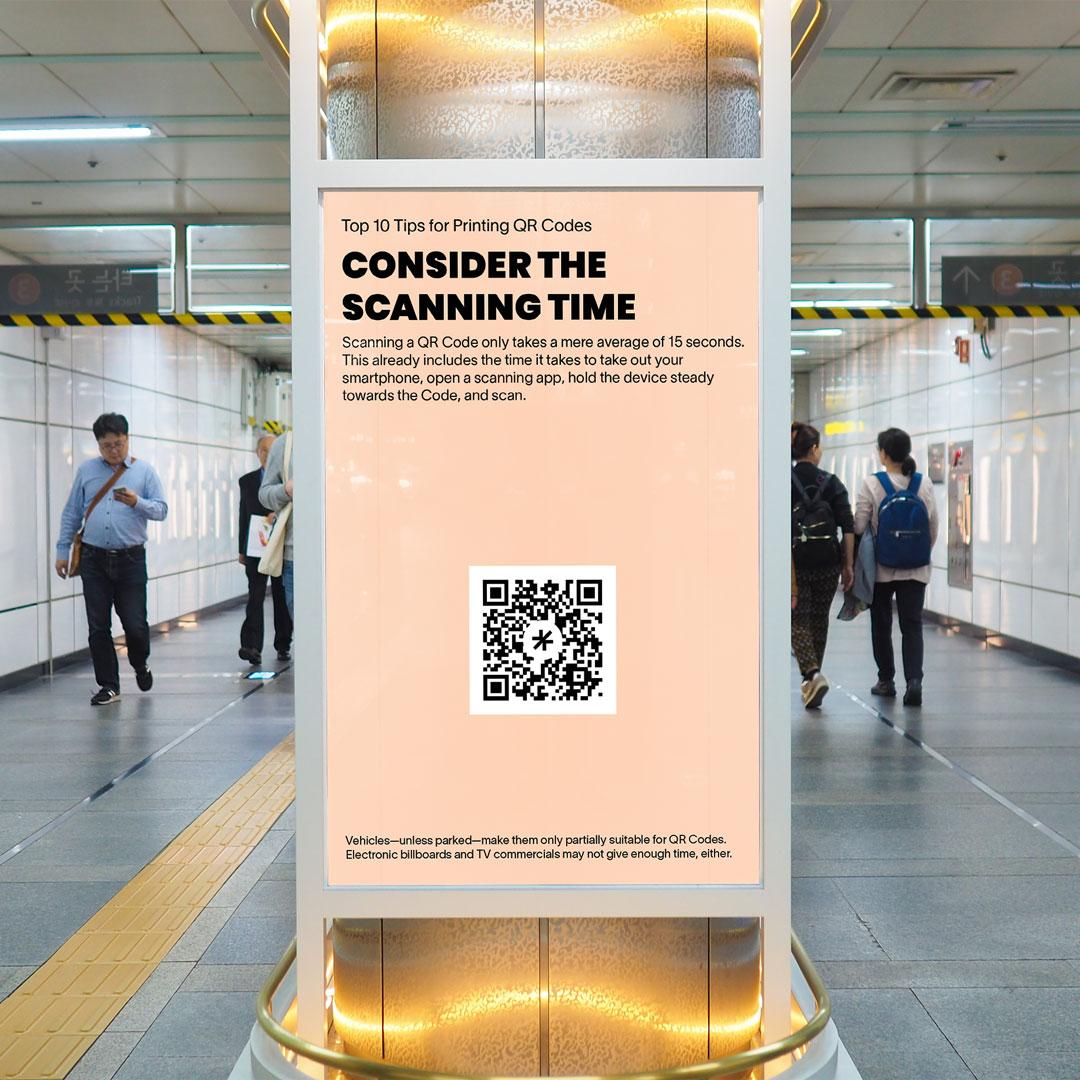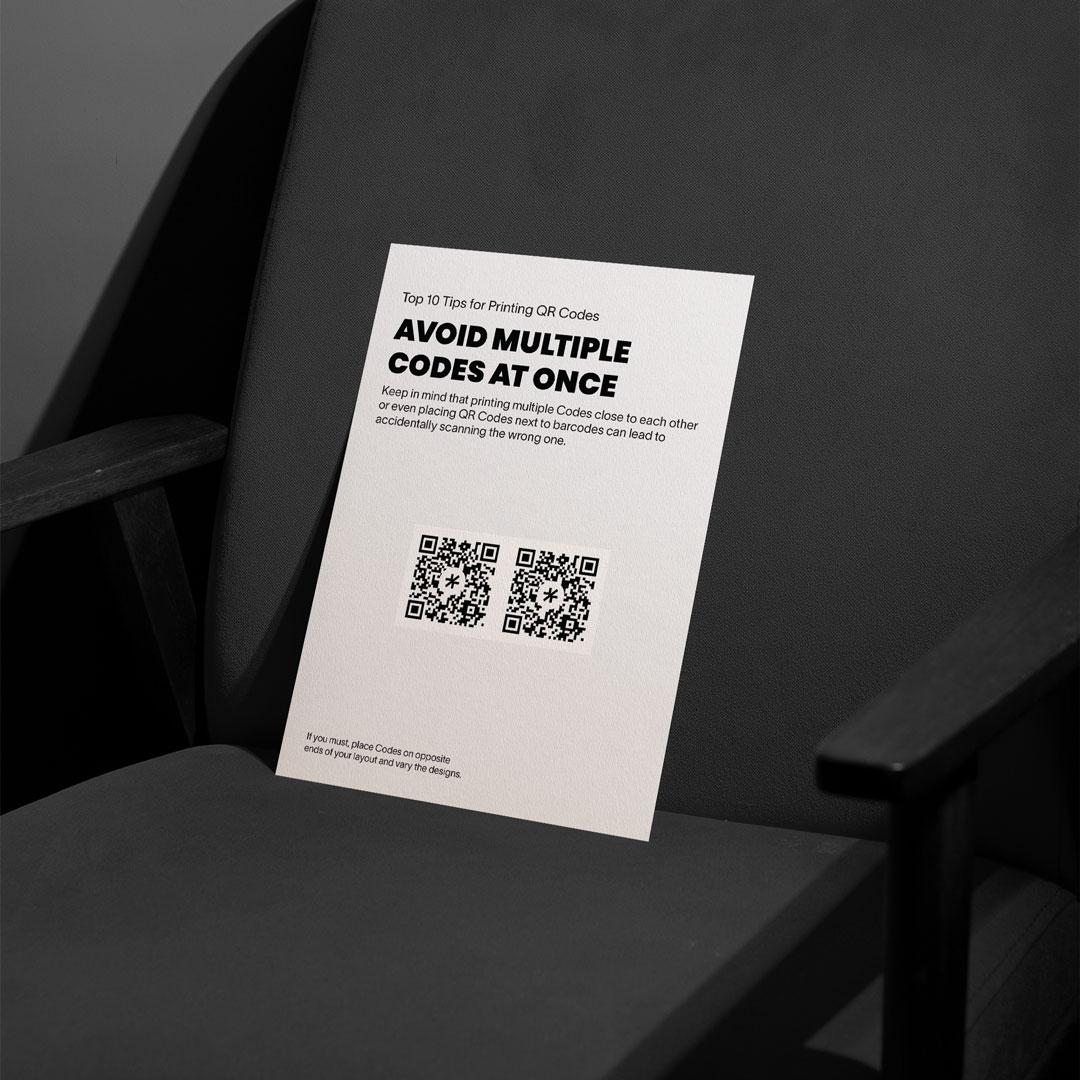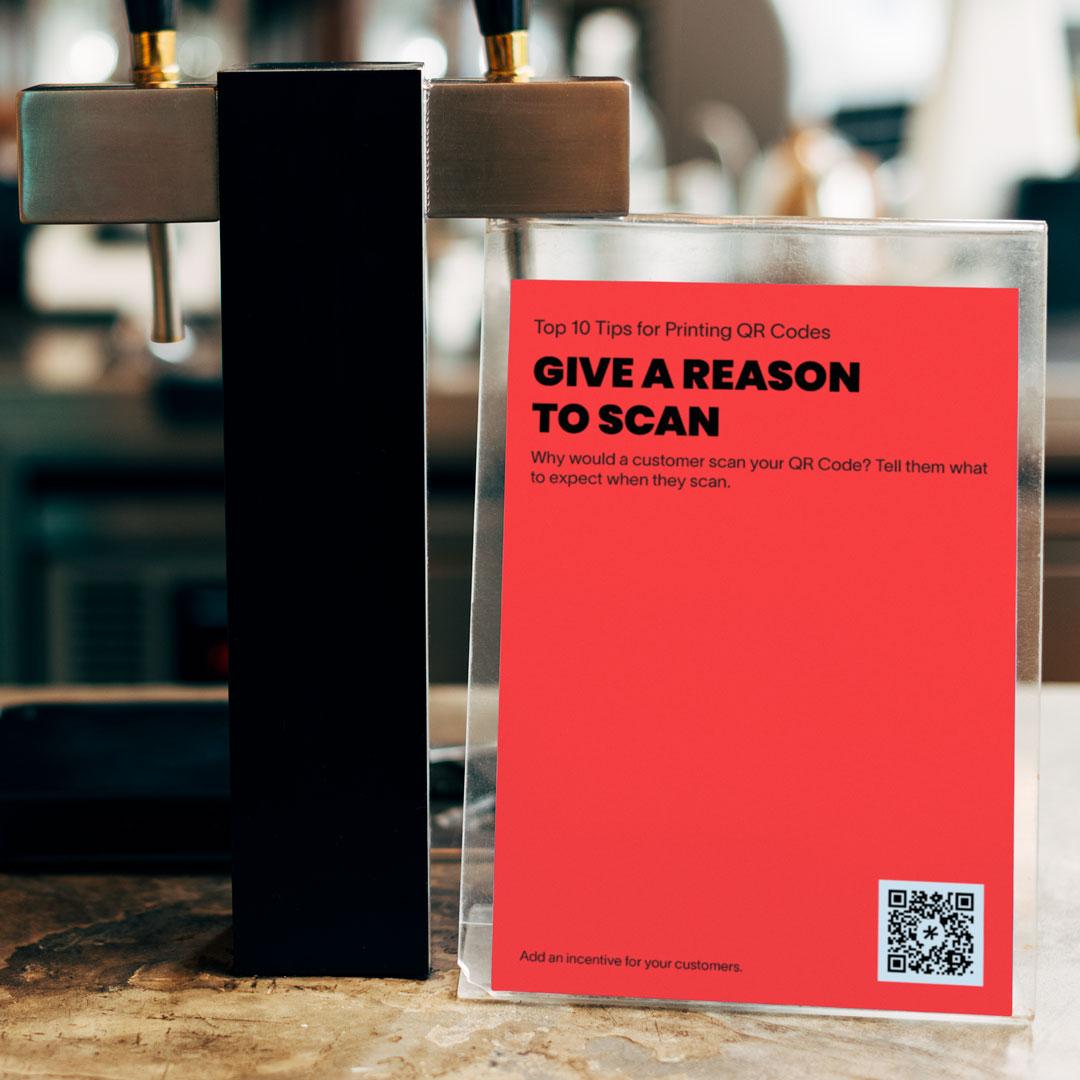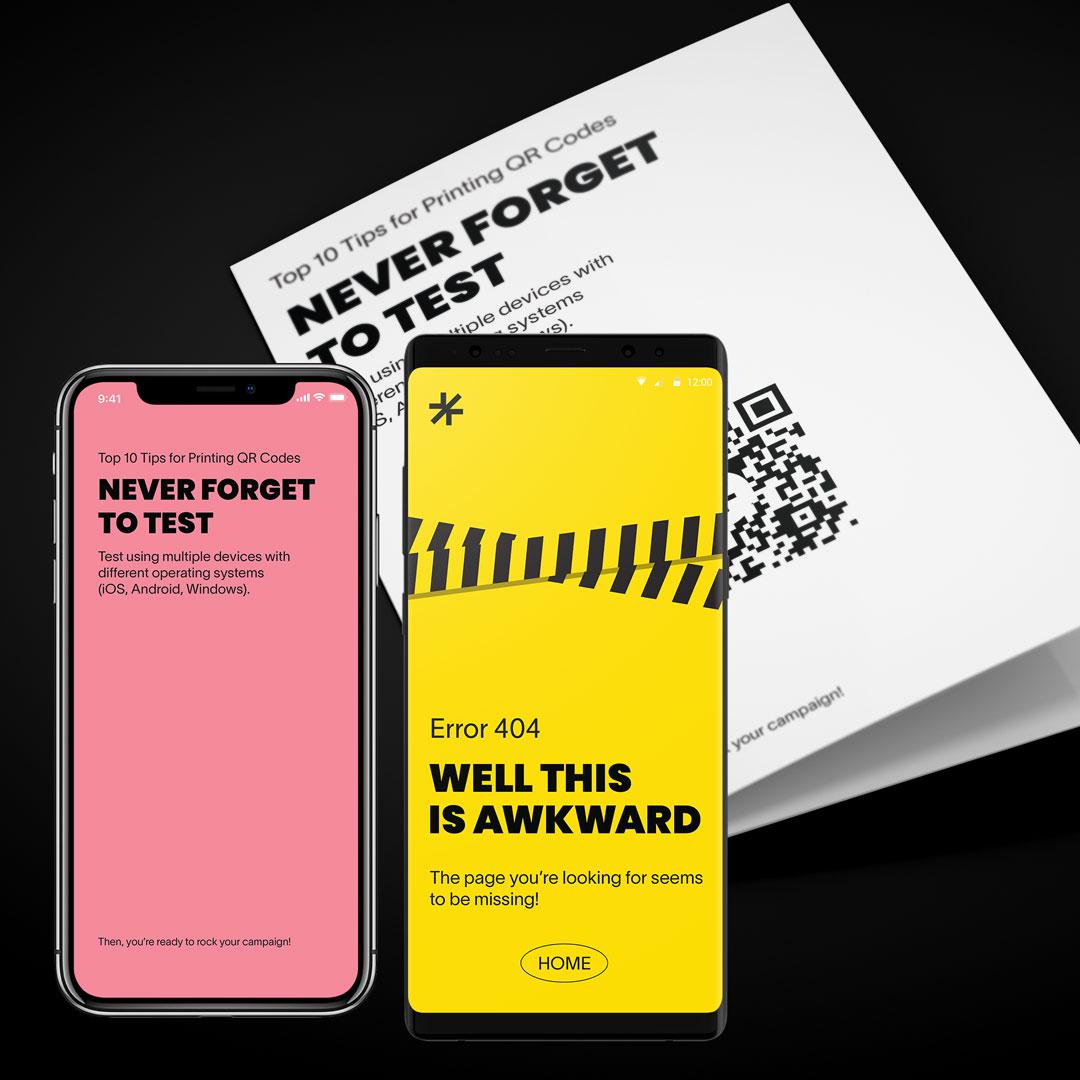
TOP 10 TIPS FOR PRINTING QR CODES
A quick response (QR) code is a type of barcode that can be read easily by a digital device and which stores information as a series of pixels in a square-shaped grid. QR codes are frequently used to track information about products in a supply chain and are often used in marketing and advertising campaigns.
1 | Design wisely
Colours and logos are a great way to personalize your QR Codes. Branding is important but be careful to not go overboard with customizing. Your custom Code should still be recognizable as a QR Code to your customers since some scanning apps don’t pick up complex designs very well. Before printing, make sure that your QR Code is readable by testing with different apps. For tips on creating a beautiful yet functional design.
2 | Pick the right size
Don’t hide away your Code, instead make it prominent so your customers take notice and scan it. Too small QR Codes usually end up unnoticed or unscannable. If printing on small to medium-sized merchandise (ex: business cards or flyers), Codes should be at least 2 x 2 cm (around 0.8 x 0.8 in). If uncertain, rather be cautious and print the QR Code bigger. But how big exactly? Practice scanning with your ideal print size and go from there.
3 | Check your content
Imagine your customers’ dismay when they take the time to scan your Code just to find a broken link or outdated information. This is a mishap we’ve frequently seen that can be easily avoided. To keep from being stuck with a QR Code that you can’t ever update, make sure to create a Dynamic Code. With this type of Code, you can change the target URL or content at any time even after you’ve already printed and distributed hundreds of your marketing material.
4 | Use high-quality images
Avoid pixelated or blurry QR Codes and make sure to print them sharp and clear. Not only do they scan better, but they also look more professional. Depending on the size of your QR Code, JPG and PNG formats work well for small-scale printing such as business cards and brochures. Graphic designers and print shops prefer vector files like EPS and SVG which can be scaled easily without losing print quality for sizable print projects.
5 | Material matters
Creativity can go a long way whether printing on paper, glass, aluminium, or plastic. Be wary of choosing material that reflects too much light or distorts the image and competes with the scannability of your QR Code. Uneven surfaces that are ribbed may disfigure the Code and printing in between magazine folds sections off parts of it so it’s hard to view the full image. Ultimately, use your best judgment and make sure to test so it’s scannable.
6 | Keep Codes within reach
The right advertising media for your campaign are those that literally reach your target audience the best. Placing your QR Code too high up, too low on the ground, or too far away means your customers will have a hard time reaching to scan the Code. Place QR Codes within appropriate reach for maximum accessibility. Would you crouch down or use a ladder just to scan a QR Code?
7 | Consider the scanning time
Scanning a QR Code only takes a mere average of 15 seconds. This already includes the time it takes to take out your smartphone, open a scanning app, hold the device steady towards the Code, and scan. Vehicles—unless parked—make them only partially suitable for QR Codes. Electronic billboards and TV commercials may not give enough time, either. Stagnant media outlets (posters, magazines, displays, etc.) are a safer choice so your customers have plenty of time to scan.
8 | Avoid multiple Codes at once
There are instances when you may need to place QR Codes next to each other. However, keep in mind that printing multiple Codes close to each other or even placing QR Codes next to barcodes can lead to accidentally scanning the wrong one. If you must, place Codes on opposite ends of your layout and vary the designs. Did you know there are QR Codes that can link to multiple URLs? QR Codes like the App Code can get to different app stores depending on the smartphone’s operating device.
9 | Give a reason to scan
Why would a customer scan your QR Code? Tell them what to expect when they scan. Even a simple “Scan Me!” has proven to engage a lot more users than Codes without any call to action. Add an incentive for your customers like “Scan Now for Bonus MP3” to get them intrigued and motivated to scan your Code.
10 | Never forget to test
The final step is to test your QR Code. At the very least, use various scanning apps to ensure that your code is readable. To go the extra mile, test using multiple devices with different operating systems (iOS, Android, Windows). Always request proof from your printer to test scan before printing a large volume of your QR Codes for distribution. Then, you’re ready to rock your campaign!
